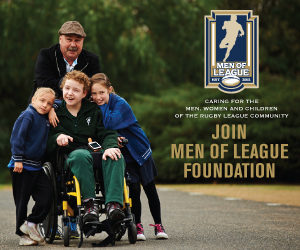BY CURTIS WOODWARD
Primitive primates evolved more than 50 million years ago. A few short years later and here we are. Doesn’t time fly?
As human beings, we are constantly digging, researching and learning. Who we were, where we came from, how we got here. It’s in our DNA.
But as rugby league supporters we seem more than just a little hesitant to delve any further back into our past than 1895 when we broke away from rugby union and began our own competition in England. We’re hesitant because anything prior to 1895 isn’t rugby league as we know it.
The game however had to come from somewhere, surely?
We began in Part 1 with a look at episkyros – the first ball sport – creating by the ancient Greeks.
Episkyros was then adopted by the Romans who created ‘harpastum’. The Roman version first appeared around 100 BC using a smallish ball to help train their warriors before battle.
In Latin, ‘harpasta’ means scrimmage.
Like episkyros that came before it, harpastum featured 12 to 14 players and was a more violent version of the game. The big change to the Roman version was that a team in possession of the ball had to keep it within the parameters of their own half. The rest of the rules are murky but it is assumed points were awarded for how many passes they were able to complete or time spent in possession. If you dropped the ball in your own half, it’s speculated the opposition also received a point.
Pues parece que el #BloodBowl tiene una base histórica#Harpastum pic.twitter.com/1G2NlKfHjE
— El Goblin Volador (@ElGoblinVolador) September 13, 2017
And Melbourne Storm haters will love this.. opposition players could lock the other team in wrestling holds to dislodge or lock the ball up.
It’s been documented that children across the republic would play the game on fields while adults had no problem starting a game in a public bath.
Athenaeus of Naucratis wrote: “Harpastum, which used to be called Phaininda, is the game I like most of all. Great are the exertion and fatigue attendant upon contests of ball-playing, and violent twisting and turning of the neck. Hence Antiphanes, “Damn it, what a pain in the neck I’ve got.” He describes the game thus: “He seized the ball and passed it to a team-mate while dodging another and laughing. He pushed it out of the way of another. Another fellow player he raised to his feet. All the while the crowd resounded with shouts of Out of bounds, Too far, Right beside him, Over his head, On the ground, Up in the air, Too short, Pass it back in the scrum.”
Monument to expulsim ludere (Harpastum) player, Tilurium/Trilj, #Croatia 1st century AD pic.twitter.com/TveE6Mzqxg
— Ninoslav Šafarić (@NinoslavSafaric) March 2, 2017
Calcio Fiorentino, an early form of football from 16th century, originated from the ancient roman "harpastum". It looks really violent pic.twitter.com/Y2wsQV8B3Y
— Xinhua Sports (@XHSports) June 25, 2017
There is no official evidence but it has been speculated that a team won when they reached 21 points.
As harpastum was more intense than episkyros, strength and endurance were just as important as agility and skill.
From harpastum also stemmed one of the first written accounts of a football crowd cheering on their favourite players.
From the book Savage Enthusiasm: A History of Football Fans:
“The very earliest reference may be from the anonymous poet who wrote in the first century AD in praise of the harpastum skills of a man named Piso, thought to be the Roman senator Gaius Calpurnius Piso. “It is your pleasure to return the flying ball or recover it when falling to the ground, and by a surprising movement get it within bounds again in its flight,” cooed the poet. “To watch such play the populace remains stock still, and the whole crowd suddenly abandons its own games.”
Part Three: Medieval Football – Europe





